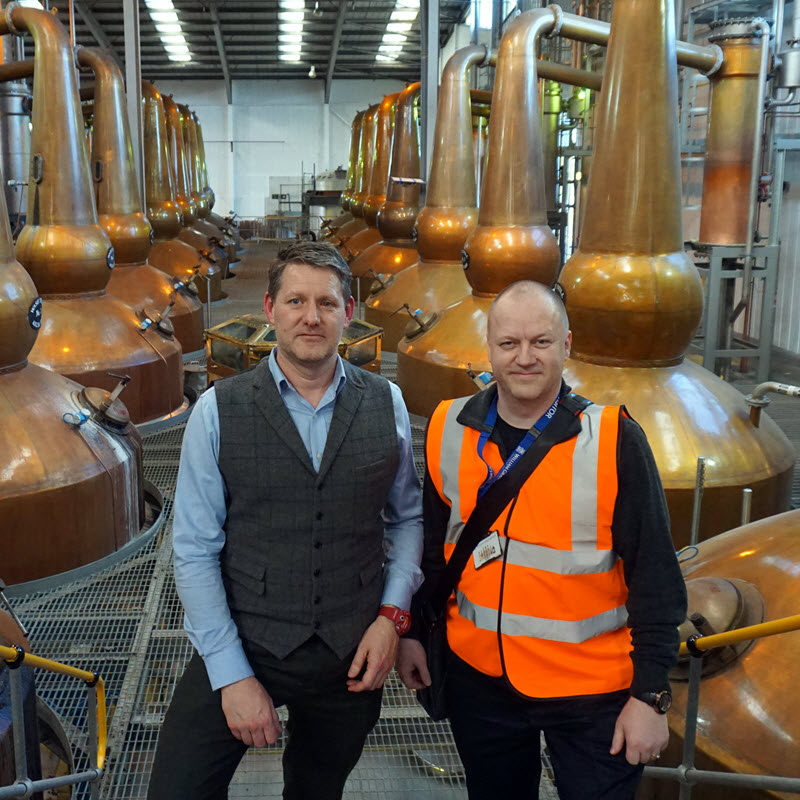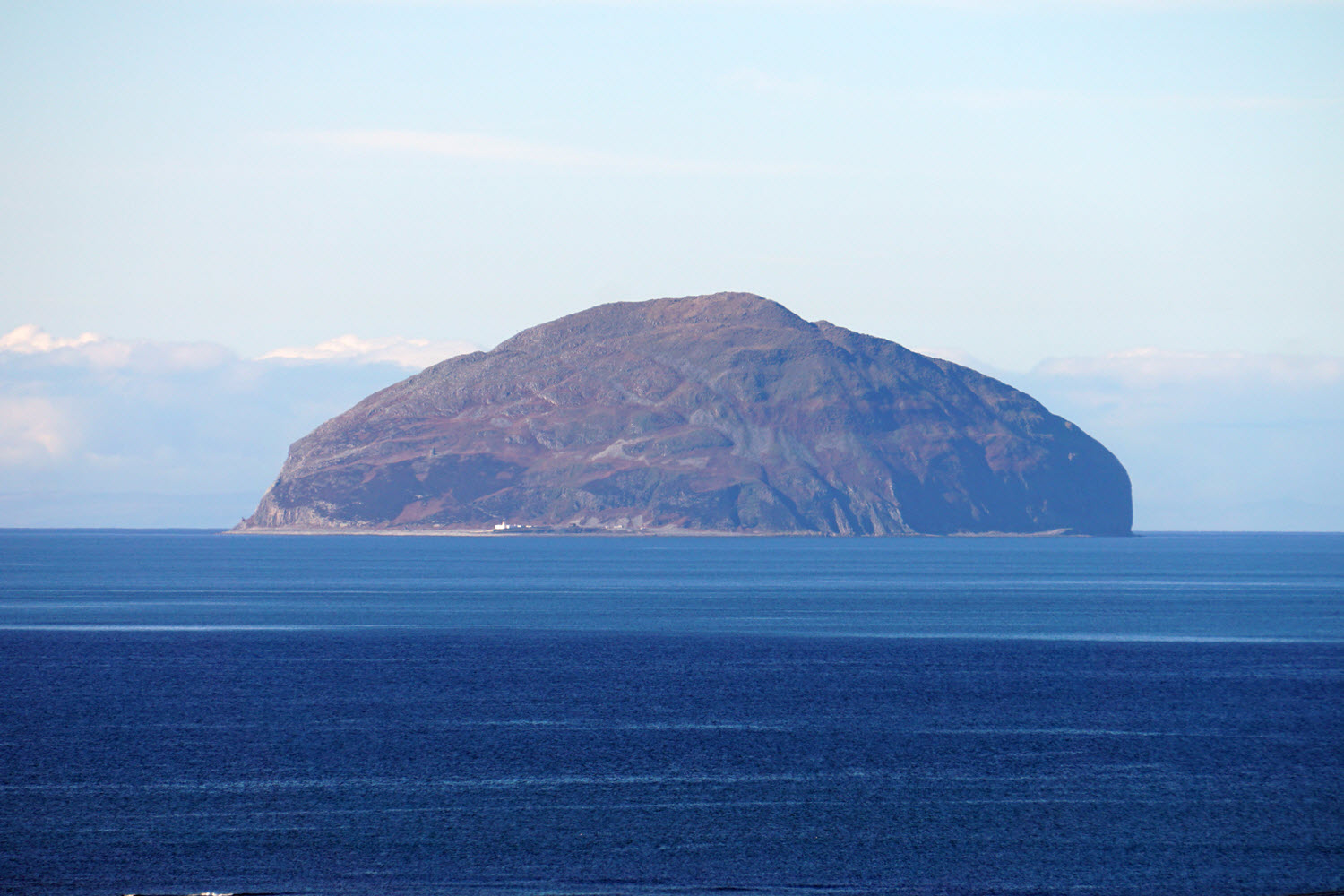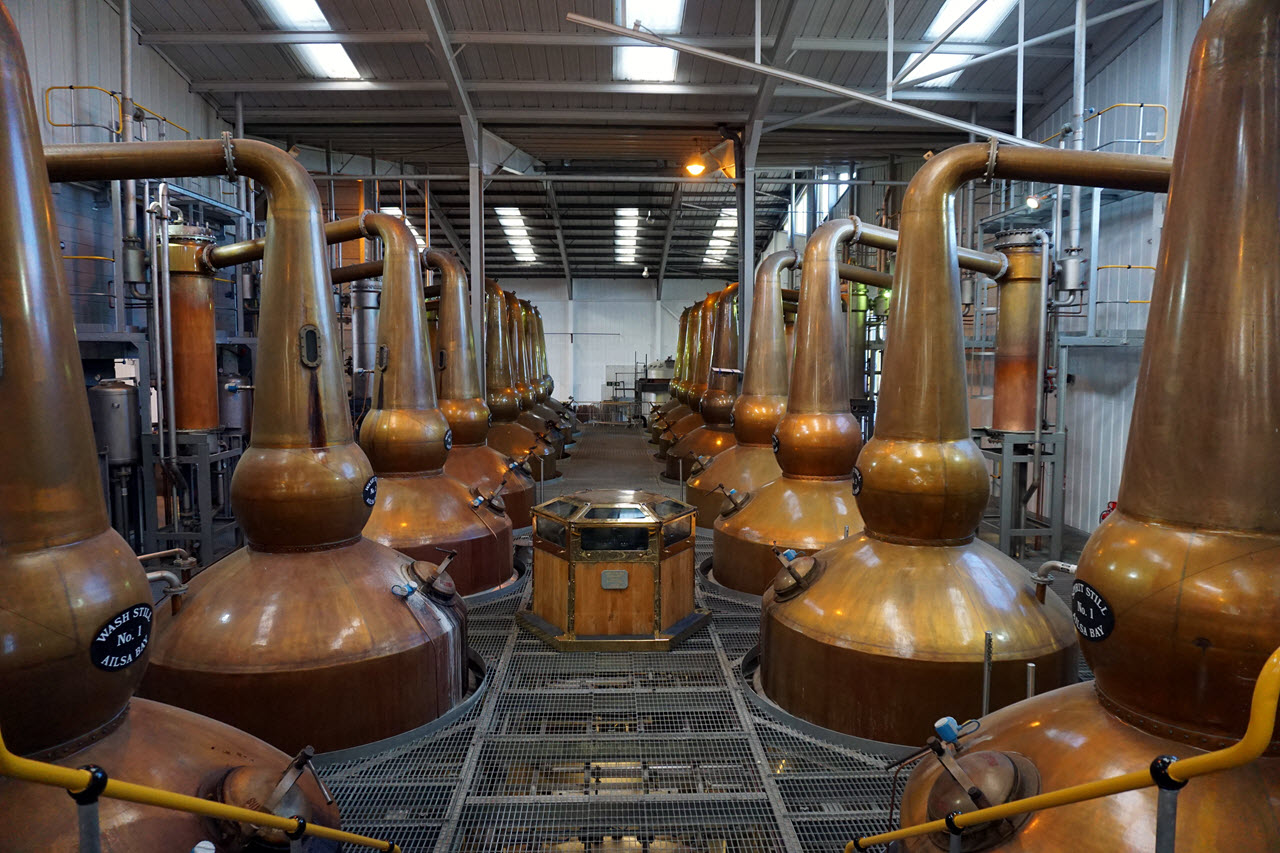Visiting Ailsa Bay
Introduction
 In the late 1950s and early 1960s the whisky industry was booming, and William Grant & Sons was selling a lot of their products like the Grant's blended Scotch and Glenfiddich. Grain whisky for their blended whisky was getting harder to come by though, as demand was higher than the supply. The decision was therefore made that they should build their own grain distillery.
In the late 1950s and early 1960s the whisky industry was booming, and William Grant & Sons was selling a lot of their products like the Grant's blended Scotch and Glenfiddich. Grain whisky for their blended whisky was getting harder to come by though, as demand was higher than the supply. The decision was therefore made that they should build their own grain distillery.
The Girvan distillery opened in 1963, after a very hectic construction period. In fact the first bulldozers hit the site just outside the town of Girvan, in the Lowland region, on April 14, 1963. The first bricks were laid down in August and by the end of December that same year production started! The best and latest available technology was used when setting up the new distillery. A similar project, at least in terms of construction time and technology would take place many years later when the Ailsa Bay distillery was built, but more on that in a bit.
Girvan is a small town with a population of just under 7000. It sits on the west coast of Scotland, and you can see Ailsa Craig, the Isle of Arran and across to Campbeltown. The area was (of course) at one time settled by Norwegian vikings, so there is an old link to Norway (just saying!).
Ailsa Bay
In December 2006 the decision was made to build the Ailsa Bay malt whisky distillery next to the Girvan distillery, and in September 2007 production started. The idea was always to run Ailsa Bay as a top modern distillery, with all the best technology producing the best possible product. They started off with 4 wash stills and 4 spirit stills, then doubled this in 2013. Today the distillery runs 24/7 and the output is a staggering 14 million litres!
Ailsa Bay is in fact not the first malt whisky distillery on the site. The Ladyburn distillery was an expansion of the Girvan distillery, created in 1966 with the addition of two pot stills. The malt portion of the distillery was closed in 1975 and demolished in 1976 (source).
William Grant & Sons also looked at other options for malt whisky distilleries. They were looking into building a new distillery on Islay in the mid to late 1960s, but the drought on the island put them off the idea. Islay was again considered in the 1990s (not sure if that was to buy or build), but again it came to nothing.
Getting there
It will take you about an hour and a half to drive from Glasgow to Girvan, following the M77 and the A77. A great alternative is to take the train from Glasgow to Girvan, switching trains in Ayr. Again this will take you approximately 90 minutes.
Once in Girvan you will see the massive Girvan (and Ailsa Bay) site just outside the town, less than two miles away. Approaching Girvan you will see the majestic island Ailsa Craig, which has given its name to the Ailsa Bay distillery and whisky. As of 2004, 60–70 per cent of all curling stones in use were made from granite from the island and is one of only two sources for all stones in the sport, the other being the Trefor Granite Quarry in Wales. A small piece of granite from Ailsa Craig is used in the massive stopper for every bottle of Ailsa Bay whisky.
The distillery site itself looks very much like a massive industrial plant from the outside, surrounded by a staggering 66 warehouses. The site is so big that we were actually taken by bus from location to location!
Please note that there is no visitors center at Ailsa Bay or Girvan distillery. If you plan to visit you must book an appointment in advance.
The distillery
We had Chris Burgess, the Distillery Manager at Ailsa Bay, take us on a detailed tour of the distillery. The first and very obvious detail you notice when you visit Ailsa Bay is that this is really a high tech distillery. Now I can certainly understand the charm and motivation behind the "we have no computers on site and we are damn proud of that" approach that some distilleries have. At the same time I am fascinated by such a high tech approach as well; I am after all an IT and tech nerd just as much as I am a whisky nerd.
Five different styles of whisky are currently produced here, and this is all automated. By the push of a button they can switch from one style to another. the level of control is staggering. For each of the styles there are 29 pages of parameters that can be set. This includes cut points, temperature control in all sub-processes etc. The five styles produced are a light and a heavy unpeated Speyside style, and three different peated styles.
There are five operators, working on 12 hour sifts. Production is running 24/7.
Here are a few numbers and facts I picked up during the tour:
- There is a uniquely shaped spirit safe in the still room.
- All tanks, including washbacks, are made from steel.
- They use a high gravity wort (80° instead of the more usual 45°) for increased efficiency
- The wort is clear
- The mash is typically at 11 % ABV
- There are 24 washbacks (50 000 litres each)
- They use shell and tube condensers (four stainless steel)
- There are 16 stills (8 wash stills and 8 spirit stills - each one at 12 000 litres capacity)
- The low wine is at 26 % ABV
- The yield is around 410 litres of pure alcohol per tonn malted barley
- The first distillation runs at around 5 hours
- The second distillation varies from 2,5 up to 8 hours
- The final spirit is at around 70-71 % ABV
- The peated spirit is casked at 63,5 % ABV
- For the unpeated spirit 50 % is casked at 63,5 % and 50 % is casked at 68,5 % ABV
- Automated cleaning programs are run between each production batch. After peated production a more thorough six hour automated cleaning process is run
- The foreshots and feints are kept separate for peated and unpeated production
The focus for the peated whisky produced at Ailsa Bay, is to have a sweet new make, with lots of peatiness in the liquid, but without the medicinal notes especially found in peated whisky from Islay.
A small portion of the spirit is 'born' in baby bourbon casks from Hudson Distillery. This does give some exciting possibilities, but at the same time it requires a lot of work, as no two casks are the same (or even the exact same size). Hudson is of course the cool craft distillery in New York, that William Grant & Sons bought a few years back. See here for my reviews on Hudson products.
Initially they thought to mature a lot more of their spirit in these baby bourbon casks from Hudson, for an initial period. The reason being that whisky does mature faster in smaller casks. The problem, however, was that the individual differences between the small casks were too big, and leaving the spirit in these casks for too long would not give a good result.
The whisky
Following the tour of the distillery we were treated with a fantastic tasting hosted by Brian Kinsman, the Malt Master at William Grant & Sons. You can read my detailed review of the first Ailsa Bay whisky to be released so far. Rumour has it that a second whisky expression from Ailsa Bay will be released within a year. For now I have no further details, but I am very curious!
Sláinte! - Thomas
[wc_box color="info" text_align="left"]
Please note that my visit to Ailsa Bay was a press trip sponsored by William Grant & Sons. All the text and the opinions are my own, but you deserve to know.
[/wc_box]







